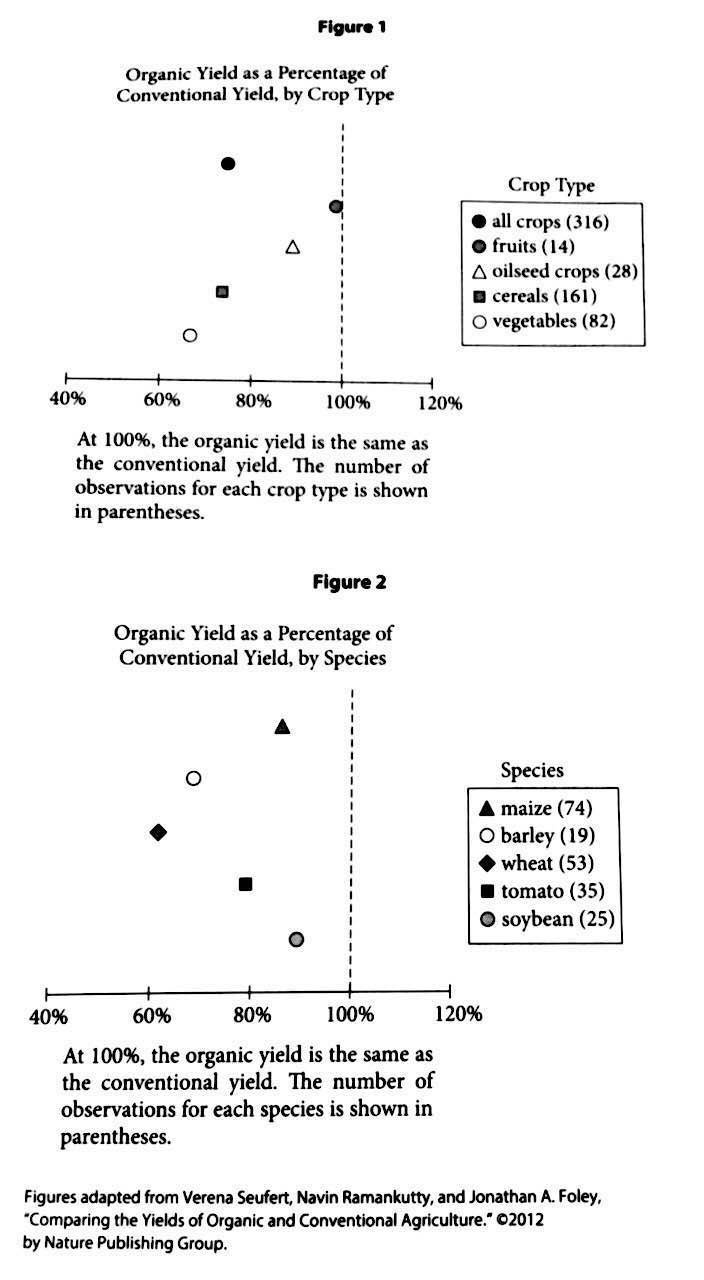Questions 22-31 are based on the following
passage.
This passage is adapted from Bryan Walsh, “Whole Food Blues: Why Organic Agriculture May Not Be So Sustainable.” ©2012 by Time Inc.
When it comes to energy, everyone loves
efficiency. Cutting energy waste is one of those goals
that both sides of the political divide can agree on,
even if they sometimes diverge on how best to get
5 there. Energy efficiency allows us to get more out of
our given resources, which is good for the economy
and (mostly) good for the environment as well. In
an increasingly hot and crowded world, the only
sustainable way to live is to get more out of less.
10 Every environmentalist would agree.
But change the conversation to food, and
suddenly efficiency doesn’t look so good.
Conventional industrial agriculture has become
incredibly efficient on a simple land to food basis.
15 Thanks to fertilizers, mechanization and irrigation,
each American farmer feeds over 155 people
worldwide. Conventional farming gets more and
more crop per square foot of cultivated land—
over 170 bushels of corn per acre in Iowa, for
20 example—which can mean less territory needs to
be converted from wilderness to farmland.
And since a third of the planet is already used for
agriculture—destroying forests and other wild
habitats along the way—anything that could help us
25 produce more food on less land would seem to be
good for the environment.
Of course, that’s not how most environmentalists
regard their arugula [a leafy green].They have
embraced organic food as better for the planet—and
30 healthier and tastier, too—than the stuff produced by
agricultural corporations.Environmentalists disdain
the enormous amounts of energy needed and waste
created by conventional farming, while organic
practices—forgoing artificial fertilizers and chemical
35 pesticides—are considered far more sustainable.
Sales of organic food rose 7.7% in 2010, up to $26.7
billion—and people are making those purchases for
their consciences as much as their taste buds.
Yet a new meta-analysis in Nature does the math
40 and comes to a hard conclusion: organic farming
yields 25% fewer crops on average than conventional
agriculture. More land is therefore needed to
produce fewer crops—and that means organic
farming may not be as good for the planet as
45 we think.
In the Nature analysis, scientists from McGill
University in Montreal and the University of
Minnesota performed an analysis of 66 studies
comparing conventional and organic methods across
50 34 different crop species, from fruits to grains to
legumes. They found that organic farming delivered
a lower yield for every crop type, though the disparity
varied widely.For rain-watered legume crops like
beans or perennial crops like fruit trees, organic
55 trailed conventional agriculture by just 5%. Yet for
major cereal crops like corn or wheat, as well as most
vegetables—all of which provide the bulk of the
world’s calories—conventional agriculture
outperformed organics by more than 25%.
60 The main difference is nitrogen, the chemical key
to plant growth. Conventional agriculture makes use
of 171 million metric tons of synthetic fertilizer each
year, and all that nitrogen enables much faster plant
growth than the slower release of nitrogen from the
65 compost or cover crops used in organic farming.
When we talk about a Green Revolution, we really
mean a nitrogen revolution—along with a lot
of water.
But not all the nitrogen used in conventional
70 fertilizer ends up in crops—much of it ends up
running off the soil and into the oceans, creating vast
polluted dead zones. We’re already putting more
nitrogen into the soil than the planet can stand over
the long term. And conventional agriculture also
75 depends heavily on chemical pesticides, which can
have unintended side effects.
What that means is that while conventional
agriculture is more efficient—sometimes much more
efficient—than organic farming, there are trade-offs
80 with each. So an ideal global agriculture system, in
the views of the study’s authors, may borrow the best
from both systems, as Jonathan Foley of the
University of Minnesota explained:
The bottom line? Today’s organic farming
85 practices are probably best deployed in fruit and
vegetable farms, where growing nutrition (not
just bulk calories) is the primary goal. But for
delivering sheer calories, especially in our staple
crops of wheat, rice, maize, soybeans and so on,
90 conventional farms have the advantage right
now.
Looking forward, I think we will need to deploy
different kinds of practices (especially new,
mixed approaches that take the best of organic
95 and conventional farming systems) where they
are best suited—geographically, economically,
socially, etc.